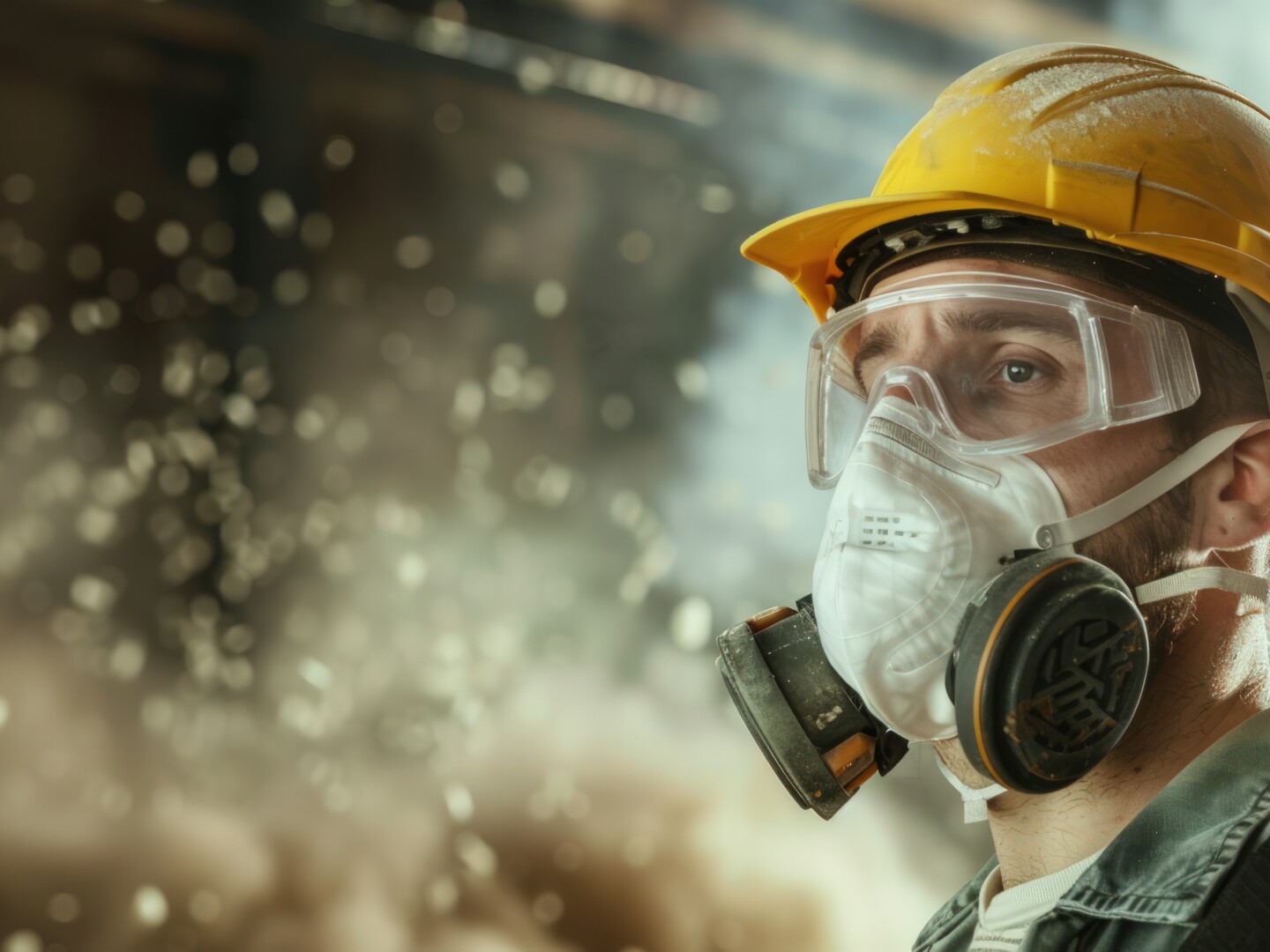


Dust exposure risks must be taken seriously. Every week, construction industry workers die from respiratory diseases caused by exposure to dust.
Now, the Health and Safety Executive (HSE) has announced that it’ll be focusing on dust exposure during its 2024 inspections, building on the momentum of its 2023 Dust Kills Campaign.
Industrial employers need to act now to implement effective measures to reduce dust exposure and mitigate the risk of lung disease.
Understanding the implications of dust exposure and its risks enables individuals to take preventive measures against potential lung diseases and use appropriate respiratory protection equipment.
Dust exposure doesn’t discriminate. Regardless of whether you’re a construction worker, an engineer, or a manager overseeing operations—you’re at risk. This prolonged exposure can lead to chronic obstructive pulmonary disease (COPD), lung cancer, and even death in severe cases. So, it’s important to know the different types of dust and how they impact health.
Some of the most common dust types encountered in construction and industrial working conditions are:
Exposure can lead to a range of lung diseases such as:
Dust particles, when inhaled, cause inflammation and scarring in the lung tissue, which in turn reduces the lungs’ capacity to absorb oxygen. This underpins the development of silicosis, a long-term lung disease.
Chronic Obstructive Pulmonary Disease (COPD) is another serious condition resulting from dust exposure. Individuals with COPD are more susceptible to developing heart disease, lung cancer, and other chronic health conditions.
The Control of Substances Hazardous to Health Regulations 2002 (COSHH) covers activities that may expose workers to construction dust. Employers are advised to evaluate the risks of dust exposure in workplaces by adhering to the ‘Assess, Control, and Review model’ outlined in COSHH regulations. This involves conducting a COSHH assessment to identify hazards and assess the risks associated with dangerous substances.
The implementation of engineering controls includes the utilisation of dust extraction systems, adequate ventilation, and wet-cutting techniques to reduce dust levels in the workplace. Dust extraction systems serve the purpose of purifying and filtering hazardous dusts and particulates to enhance air quality.
Proper ventilation is crucial for controlling dust levels in the workplace. By diluting and removing airborne contaminants, ventilation reduces the risk of workers inhaling dangerous dust particles. Wet-cutting methods are simply the utilisation of water to notably diminish the dust generated while cutting materials such as concrete. This method has the potential to decrease the release of dust particles by as much as 85% in comparison to dry-cutting techniques.
Personal protective equipment, such as respirators and masks, should be provided to employees to protect them from inhaling harmful dust particles. The recommended types of respirators for dust exposure include:
N95 is an American respirator standard which is widely considered equivalent to the UK/European FFP2 respirators for filtering non-oil-based particles which is effective in preventing dust inhalation.
Employers should provide information, training and instruction for employees who work with substances hazardous to health. Also, employees need to understand the outcome of the risk assessment and what this means for them.
In addition, employees should have access to safety data sheets.
A comprehensive dust exposure training program should include information on the hazards related to dust, strategies to manage dust in the work environment, practical measures to reduce exposure, as well as specific details such as the trainee’s name, company name, course name, date of completion, and expiry date.
With a heightened focus on minimising lung disease, HSE inspections are now more rigorous than ever. It’s critical your business is prepared for these expectations and is in full compliance with the COSHH regulations.
Below are nine ways to demonstrate compliance with COSHH regulations, including identifying hazardous substances, assessing the substances used and produced in the workplace, controlling the risks, keeping records, and providing training.
HSE inspections can vary in their approach—so, it’s essential to tailor your preparation to the unique characteristics of your workplace.
While controlling dust in construction poses a challenge, it can be effectively managed with suitable strategies and equipment. Dust extraction systems like Local Exhaust Ventilation (LEV) systems, M Class Dust Extractors and on-tool extraction are suitable for use on construction sites to manage dust.
Remember, by utilising water in wet-cutting methods you can minimise the dust generated during cutting procedures with efficiency.
The laws governing the control of harmful substances in the workplace, and their supporting ACOP, stated that RPE should be used as a last resort after all other reasonably practicable measures to prevent or control exposure have been explored. By going through the risk assessment process required by these laws, you can determine whether the use of RPE (Respiratory Protective Equipment) is necessary in the workplace.
There are many different RPE types designed to:
It should be ensured that the RPE selected can protect the worker from the hazardous substance emitted into the working environment. The RPE selection will depend on the amount of hazardous substances in the air and their form (e.g., particles, vapour). The protection they offer will be determined by a variety of things, including the protection factor. For example, providing workers with RPE with an assigned protection factor of twenty, such as disposable FFP3 masks or half masks with P3 filters, are essential to preventing inhalation of hazardous construction dust.
Click here to read some frequently asked questions about Asbestos.